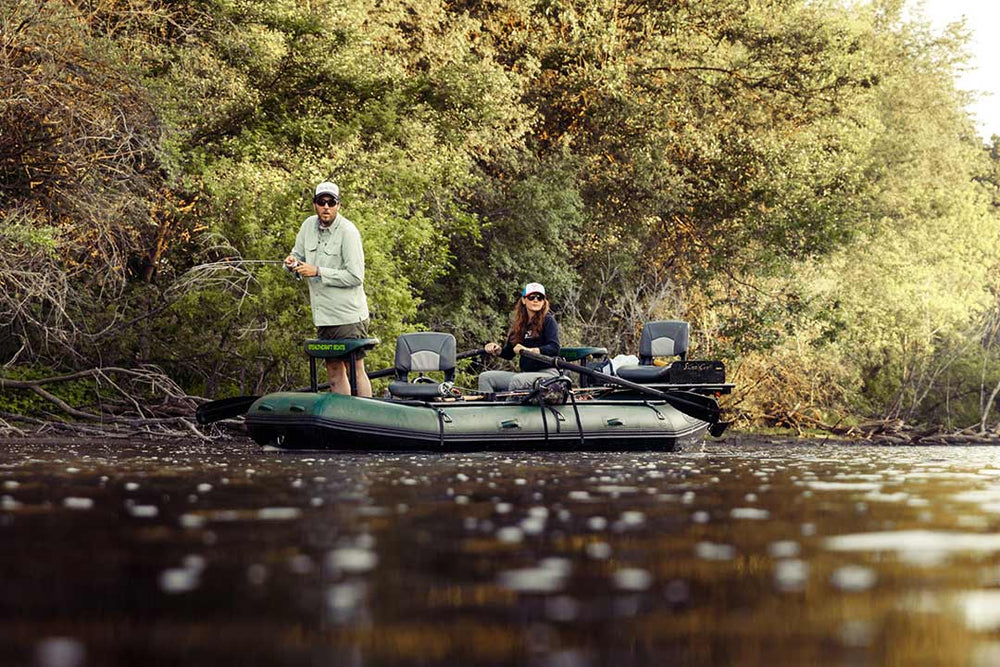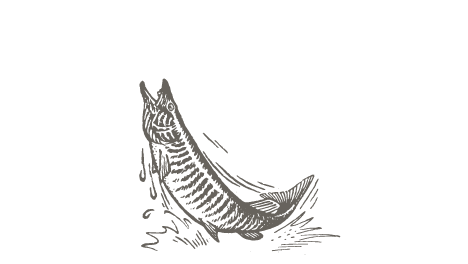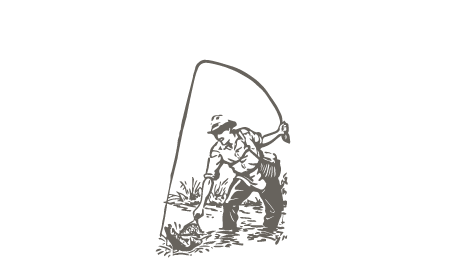Single Buford - Halloween
The Buford is probably the most iconic musky fly around - first designed and fished by Brad Bohen, now tied and fished by thousands of anglers all over the world for all different species.
The best part about the Buford is it can be tied in a variety of ways with many different materials. But no matter what, it always has that special spherical head that gives the fly its unique movement.
My rendition is fairly simple, and depending on the color, only a few materials are needed. I try to keep the head to one big clump of deer hair. This makes it just a little less buoyant in the water column so it can get down a bit deeper. Typically, I use the back side or stiff fibers from a bucktail to do the Buford head. You can also use deer belly hair or other synthetic products.
Overall specs are - neutrally buoyant, lightweight, and provides a jerk left and right after the strip. The single pattern is tied on one 6/0 hook and comes in at 6-8 inches in length. You can lengthen this pattern with shanks and more hooks. You can check this finished fly out at the link here.
List of Materials:
-
Bucktail: Primo Tail A Grade - Black and Medium Orange (black bucktail backside is used for buford head).
-
5-7inch Schlappen in Black
-
Long Orange Grizzly Saddle Feathers (Long schlappen feathers can work too)
-
Holographic Flashabou Magnum - Orange
-
Flashabou Magnum - Black
-
Krystal Flash - Copper
-
Kona BGC 6/0 (PR320, PR350, TP610, and many other 5/0 or 6/0 hooks work too)
-
Veevus GSP 200 Denier Thread - Black
Recipe
-
Start by building a thread base along the full shank of the hook.
-
Cut a pencil sized clump of long orange bucktail and tie it in standard way (tips pointed to the back of the hook). I tie this first clump in on the hook shank so it is in line with the hook point. The goal with this section of bucktail is to tie it down to be fairly narrow so it acts as a rudder and keeps the next set of materials (feathers & flash) from getting fouled on the hook.
-
Tie in one black Schlappen feather on each side of the bucktail (tips pointed to the back of the hook). I try to use the full 5-7 inches of the feather and make sure they are tied in to lay flat on each side. This aids the rudder effect of the tail.
-
Tie in several orange saddle feathers. If you have really thin feathers I would use at least 6. If you have thicker, webby feathers you can use just 3. You want to tie the feathers in on each side and on the top (tips pointed to the back of the hook). These feathers will create the length of the fly, so try to have at least 5-6 inches of feather draping off the back of the hook.
-
Cut 10 pieces of Flashabou Magnum in each of the colors and then mix it together to create a black and orange Flashabou blend. Tie in on top of the hook shank. I try to keep the Flashabou to be just a bit shorter than the length of the longest feather. I also taper the strands before tying in so they are all a bit uneven.
-
Add some glue to the thread to really lock everything in.
-
Reverse tie the long orange bucktail. I grab a pencil sized clump and try to tie it in 1/8 to a 1/4 of an inch in front of the first section of material. To achieve a nice taper, I tie this one down to be fairly narrow but just slightly less narrow than the tail section.
-
Add in 10-15 strands of copper Krystal Flash. When I tie in the Krystal Flash, I try to halo it around the bucktail, using my thumb and thread pressure to spread out the material.
-
From here, it is all bucktail reverse tied to the head each about a pen size diameter. I do one more of orange and then the rest including the head is black. Leave 1/4in or so near the hook eye to finish the head. Each bucktail wrap should get less and less narrow to achieve the proper taper and water pushing effect. If you want to elongate this pattern to a double or articulated size, just add the extra shank or hook in front and keep reverse tying bucktail in the same order until you get to the head.
-
Now time for the head. I look to grab one large chunk of stiff deer hair (belly or bucktail work). I am looking for something that is almost two sharpies widths in diameter. I clean out the underfur and try to restack the fibers to be in line. Now I give my bobbin a good spin. I try to line up the butts of the deer hair to face the hook eye and extend about 1in or more from where they are tied in. Just like before, I do a few wraps to capture and then tighten down to flair. I usually have to spread the fibers out a bit with my finger to get them even.
-
Once the head fibers are tied in, I bring my thread up to the hook eye and secure the fly in. The bigger the thread wrap in front of your Buford head, the more you will push the deer fibers back. The less thread, the more they will stand upright.
-
Once I am done tying in material, I do several whip finishes and add glue to tighten it all down.
-
Once the glue dries, I came back through with a scissors and clean up the buford head to my desired size.
-
Done! Time to fish!
If you have any questions, feel free to drop them in the comments or shoot us an email at shop@muskyfool.com. Have a great tying season!






Leave a comment